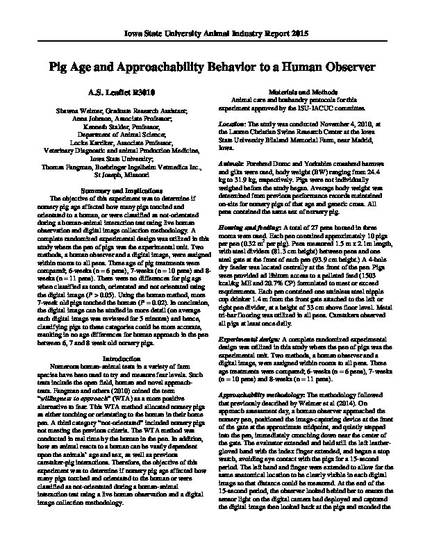
The objective of this experiment was to determine if nursery pig age affected how many pigs touched and orientated to a human, or were classified as not-orientated during a human-animal interaction test using live human observation and digital image collection methodology. A complete randomized experimental design was utilized in this study where the pen of pigs was the experimental unit. Two methods, a human observer and a digital image, were assigned within rooms to all pens. Three age of pig treatments were compared; 6-weeks (n = 6 pens), 7-weeks (n = 10 pens) and 8-weeks (n = 11 pens). There were no differences for pig age when classified as touch, orientated and not orientated using the digital image (P > 0.05). Using the human method, more 7-week old pigs touched the human (P = 0.02). In conclusion, the digital image can be studied in more detail (on average each digital image was reviewed for 5 minutes) and hence, classifying pigs to these categories could be more accurate, resulting in no age differences for human approach in the pen between 6, 7 and 8 week old nursery pigs.
Available at: http://works.bepress.com/kenneth_stalder/155/
